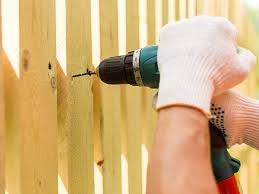Planning for a large DIY project can be an exciting and overwhelming task. Whether you’re renovating your home or building a new outdoor structure, there are several important steps you need to take to ensure your project runs smoothly. One of the most crucial steps is waste management. Proper disposal of waste is not only important for the environment but also for the safety of everyone involved in the project. In this article, we’ll take a look at how to plan for a large DIY project, starting with step 1: renting a dumpster for waste.
As a DIY enthusiast, I have taken on several large projects over the years. And let me tell you, proper waste management is essential to the success of any DIY project. I remember the first time I took on a major renovation project, I didn’t plan for waste management, and it ended up costing me more time and money than I had anticipated. That’s why I want to share my experience with you and help you plan for your own DIY project.
Step 1: Rent a Dumpster for Waste
Renting a dumpster should be your first step when planning for a large DIY project. A dumpster rental is an efficient and convenient way to dispose of large amounts of waste quickly and easily. And the good news is, renting a dumpster doesn’t have to break the bank.The Discount Dumpster Company offers affordable dumpster rental services – they’ve been rated as being the cheapest dumpster rental in Las Vegas, Phoenix, and many other cities across the country.

When choosing a dumpster rental company, there are a few things to keep in mind:
Size of the Dumpster: Consider the size of the dumpster you’ll need based on the size of your project. Most dumpster rental companies offer a range of sizes, from 10 yards to 40 yards. The larger the dumpster, the more it will cost.
Rental Period: Determine how long you’ll need the dumpster for. Most dumpster rental companies offer a standard rental period of 7-10 days, after which you’ll need to pay an additional fee for each day you keep the dumpster.
Type of Waste: Be aware of the type of waste you’ll be disposing of in the dumpster. If you’re disposing of hazardous waste, such as chemicals or asbestos, you may need a special dumpster and will likely face additional fees.
Once you’ve chosen a dumpster rental company, make sure to ask about any additional fees or charges, such as delivery and pickup fees.
Step 2: Create a Plan
Now that you’ve rented a dumpster for waste, it’s time to create a plan for your project. This plan should include a timeline, budget, and list of materials you’ll need.
Timeline: Determine the amount of time you’ll need to complete the project, and create a timeline that includes milestones and deadlines. This will help you stay on track and ensure you complete the project within the desired timeframe.
Budget: Determine how much money you’re willing to spend on the project, and create a budget that includes all expenses, including materials, tools, and labor. Be sure to leave some wiggle room for unexpected expenses.
List of Materials: Create a list of all the materials you’ll need for the project, including tools, hardware, and building materials. Make sure to order any necessary materials well in advance to avoid delays in the project timeline.
Step 3: Prepare the Worksite
Before you begin working on the project, it’s important to prepare the worksite. This includes clearing any debris or obstacles, setting up a work area, and ensuring you have the necessary tools and equipment.
Clearing Debris: Use the rented dumpster to dispose of any debris or waste from the worksite. This will ensure a clean and safe work area and prevent any delays or accidents.
Setting up a Work Area: Create a designated work area that is clean, well-lit, and well-ventilated. This will make the project more efficient and comfortable for you and any helpers you have.
Necessary Tools and Equipment: Gather all the tools and equipment you’ll need for the project and ensure they are in good working order. This includes power tools, hand tools, safety equipment, and any specialized tools or equipment needed for your specific project.

Step 4: Start the Project
Now that you’ve rented a dumpster for waste, created a plan, and prepared the worksite, it’s time to start the project. Follow your timeline and budget, and make adjustments as necessary. Be sure to take breaks and rest when needed to prevent burnout and ensure safety.
During the project, make sure to dispose of waste in the rented dumpster as soon as possible to avoid any safety hazards and maintain a clean and organized work area. You can also consider recycling or donating any materials that are still in good condition to minimize waste.
Step 5: Wrap Up the Project
Once you’ve completed the project, it’s time to wrap up and clean up the worksite. This includes removing any debris or waste and returning any rented tools or equipment. Don’t forget to take before and after pictures to document your hard work!
Planning for a large DIY project can be overwhelming, but by following these steps, you can ensure a smooth and successful project. Renting a dumpster for waste management is a crucial first step that will save you time, money, and effort in the long run. Creating a plan, preparing the worksite, starting the project, and wrapping up the project will help you stay on track and ensure a safe and efficient project. Good luck with your DIY project!






